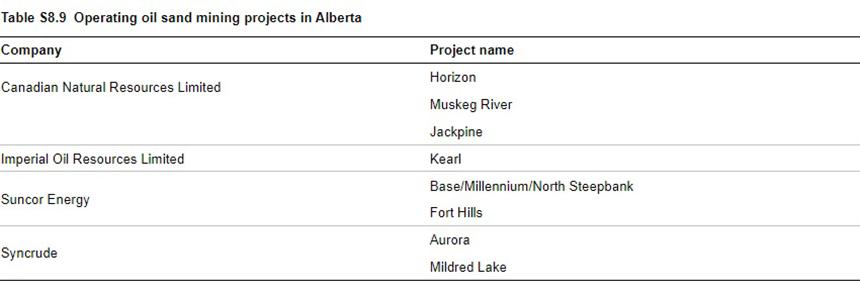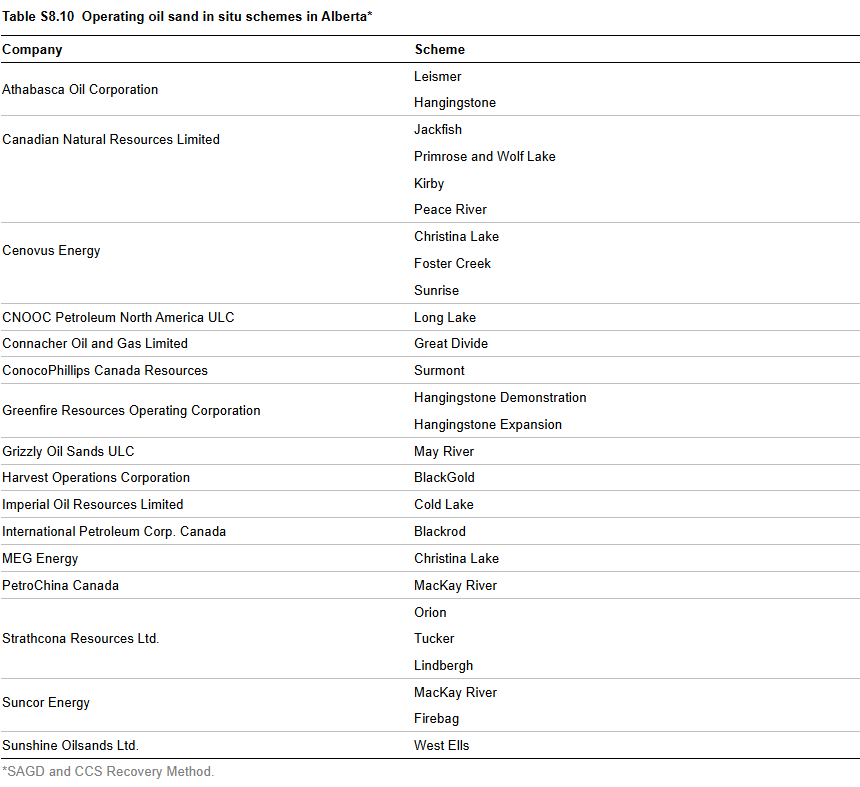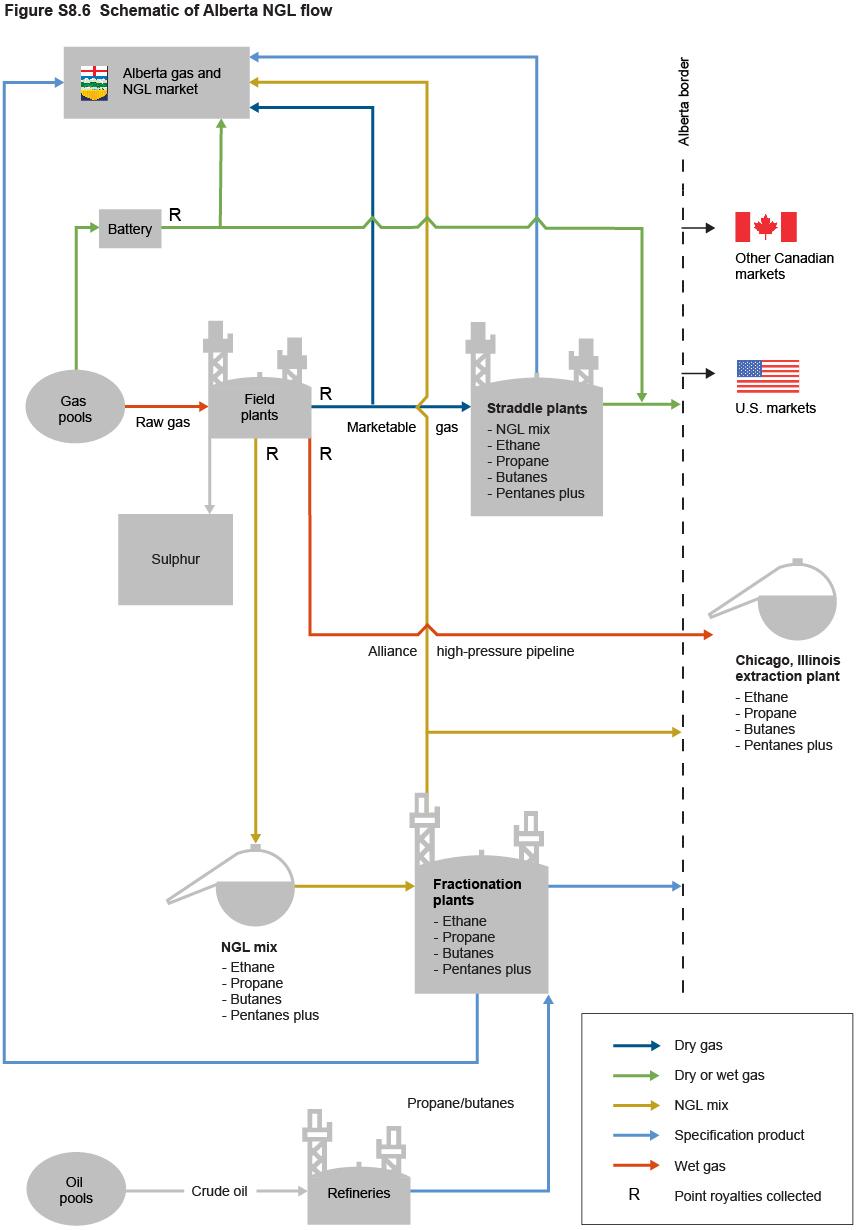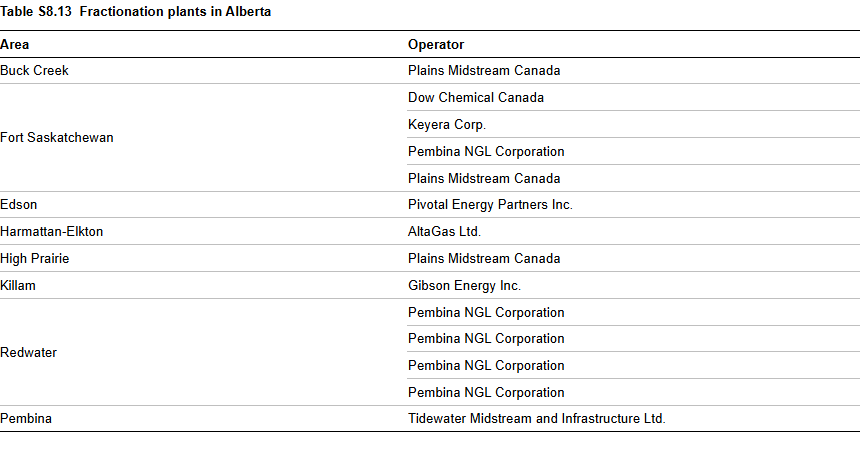Updated June 2025
Alberta has over 26 000 oil facilities and over 18 000 gas plants and gas facilities. In 2024, this facility count included
- 8 operating oil sands mines,
- 26 thermal in situ oil sands operations,
- 4 active bitumen upgraders,
- 5 refineries,
- 3 coal processing plants, and
- 4 producing coal mines.
Oil Sands Facilities
Mine Projects
Table S8.9 lists the company and project names of the eight operating oil sands mines in Alberta. Learn more in the crude bitumen section.

In Situ Schemes
Table S8.10 provides the company and project names of in situ operations in Alberta.

Upgraders
Table S8.11 lists the average upgraded bitumen production in Alberta in 2024 by company.

Oil Refineries
There are 18 refineries in Canada, and 5 are in Alberta. These refineries have a combined refining capacity of 0.30 million cubic metres per day (106 m3/d) or 1.9 million barrels per day (106 bbl/d). In 2024, the U.S. combined refining capacity was about 2.9 106 m3/d (18.4 106 bbl/d). The U.S. has the highest number of complex refineries in the world, meaning they can process heavy sour crudes.
Alberta’s oil reaches markets in Ontario and Quebec through Enbridge Inc.’s Mainline system. Western producers are limited to using rail to reach refineries in the Atlantic provinces, which is disadvantageous because rail is more expensive, and Alberta’s oil competes with imports shipped from overseas.
In 2024, Alberta’s refineries had an estimated total combined throughput of 91.4 thousand (103) m3/d (575.0 103 bbl/d). Together, these refineries processed
- 56.9 103 m3/d (357.9 103 bbl/d) of upgraded bitumen,
- 11.4 103 m3/d (71.4 103 bbl/d) of nonupgraded bitumen,
- 17.8 103 m3/d (112.3 103 bbl/d) of crude oil, and
- 5.3 103 m3/d (33.4 103 bbl/d) of pentanes plus.
Table S8.12 lists the 2024 throughput for Alberta’s refineries.

Alberta’s refinery utilization rate was 103% in 2024. The refinery utilization rate indicates how efficiently the refining complex operates, so the higher the utilization rate, the higher the production of refined products.
Natural Gas and Natural Gas Liquids Processing Plants
Alberta has
- over 400 active gas processing plants,
- 14 fractionation plants (separating out a mix of natural gas liquids [NGLs] into its different components), and
- 7 straddle plants.
Figure S8.6 shows the different paths and processes that NGLs may take from the gas pools to the markets.

Western Canada Liquified Natural Gas Projects
LNG Canada began constructing its Kitimat, B.C., terminal in 2019 to export liquified natural gas (LNG) overseas and remain on track to start commercial operations in 2025.
This terminal will be the first in western Canada to export LNG overseas, enhancing Alberta’s ability to access international markets. The first phase is expected to export up to 14 million tonnes per year (about 1.8 billion cubic feet per day); the proposed second phase will double export capacity to 28 million tonnes per year (about 3.7 billion cubic feet per day).
The Woodfibre LNG project is currently under construction and will be the world’s first net zero LNG export facility . Located near Squamish, B.C., the project will produce about 2.1 million tonnes of LNG annually, with a commercial operation date in 2027.
Fractionation and Straddle Plants
Table S8.13 lists the fractionation plants in Alberta, and Table S8.14 the straddle plants.




